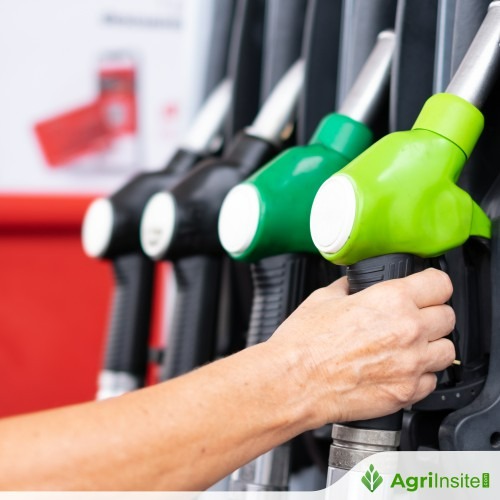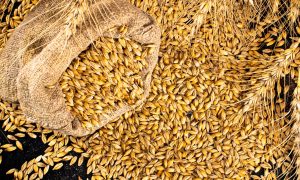Establishing roadmap post-20% ethanol blending target: Shaping India’s ethanol future

India is advancing its ethanol blending target to 20% by 2025-26, boosting energy security, reducing emissions, and benefiting farmers. Ethanol production surged to 1,685 crore liters annually, with companies like TEIL expanding capacity. Future plans include promoting flex-fuel vehicles, advanced technologies like 2G ethanol, and sustainable aviation fuel, aiming for a greener, more sustainable energy future.
India’s energy landscape is transforming with ethanol emerging as a key solution to energy security, environmental concerns, and rural economic growth. The Government’s decision to advance the target for 20% ethanol blending (E20) by Ethanol Supply Year 2025-26 demonstrates the country’s commitment to cleaner energy alternatives. Over the past decade, India has made significant progress, scaling ethanol blending from 1.53% in 2014 to 14.60% in ESY 2023-24. This progress is supported by the expansion of infrastructure, with over 17,400 retail outlets dispensing E20 , with 400 pumps dedicated to E100.
Ethanol production capacity has surged to 1,685 crore liters annually, benefiting over 50 million sugarcane farmers. During the last three years, as on 30th September, 2024, the Ethanol Blended Petrol (EBP) Programme helped expeditious payment of approx. Rs 57552 crore to the farmers. The EBP Programme has not only bolstered economic growth but also reduced foreign exchange outflow. In the last ten years, it has translated into forex impact of over Rs.1,08,600/- crore, net CO2 reduction of 557 Lakh Metric Tonnes (LMT) and expeditious payment to farmers to a tune of over Rs. 92,400/- crores. These outcomes highlight the dual benefits of ethanol blending—boosting the economy and improving environmental sustainability.
Expanding the Vision Beyond E20
While the country is on track to meet the E20 target by 2025, the future of ethanol blending extends beyond this milestone. Achieving the 20% blending target by 2025 will require approximately 1,016 crore liters of ethanol, totaling 1,350 crore liters when accounting for other uses. By 2025, an ethanol production capacity of around 1,700 crore liters is necessary, assuming plants operate at 80% efficiency. Continued investment in production infrastructure is crucial to maintain this trajectory.
The Indian government has begun discussions to establish a roadmap for sustainable energy solutions beyond the 20 per cent ethanol blending target, indicating a forward-thinking strategy that anticipates future energy needs. To support this initiative, the government has sought suggestions from key industry bodies like Indian Sugar and Bio-Energy Manufacturers Association (ISMA), Grain Ethanol Manufacturers Association (GEMA) and others.
The ISMA has responded to the government’s call for suggestions on the ‘Roadmap for Ethanol Blending Beyond 2025’ by presenting its recommendations at the 2nd Inter-Ministerial Committee (IMC) meeting, held on November 30, 2024. The apex body shared a detailed roadmap that emphasised the need for a collaborative approach that combined policy support, investments and technological innovation to enhance India’s energy security and successfully address future demands.
The adoption of advanced technologies, such as 2G ethanol production from agricultural residues, is essential for reducing waste and ensuring that food crops are not displaced. Promoting Flex-Fuel Vehicles (FFVs) and Hybrid Electric Vehicles (HEVs) capable of higher ethanol blends will further support a transition to greener transportation and enhanced energy efficiency. Additionally, the Government should focus on targeting subsidies to create an additional ethanol production capacity. These investments will be critical for achieving the long-term vision of sustainable energy growth.
Tax reforms should focus on reducing GST to 5% for FFVs and implementing differential pricing for ethanol fuel, alongside normalizing the Total Cost of Ownership (TCO) for FFVs and Battery Electric Vehicles (BEVs). Research and development will also play a crucial role in ensuring that India remains at the forefront of biofuel innovation, particularly in areas like 2G ethanol, Sustainable Aviation Fuels (SAF), and ethanol-to-hydrogen conversion technologies. A formula-based pricing mechanism for ethanol should be linked to the Fair and Remunerative Price (FRP) of sugarcane to ensure stability. Additionally, infrastructure expansion should include setting up bio-hubs near sugar mills that would integrate ethanol production with other renewable initiatives, such as bioelectricity, biofertilizers, and biogas production. This approach ensures efficient resource utilization, fosters a circular economy, and supports a sustainable future.
As India builds on the momentum from its ethanol blending goals, the country is also investing heavily in Sustainable Aviation Fuel (SAF). The global aviation sector, which accounts for 2% of all carbon dioxide (CO2) emissions and 12% of CO2 emissions from transportation, is undergoing a transformation with SAF emerging as a promising solution to reduce emissions. India has set a goal of 1% SAF in jet fuel for international flights by 2027, with this percentage doubling to 2% by 2028. Realizing this ambitious target will require investments, which will give impetus to the aviation sector’s decarbonisation efforts, reducing carbon emissions. This capital investment will result in a substantial socio-economic impact, creating jobs across the value chain and reducing crude oil import bills. Further, SAF production can boost farmers’ income by 10-15 percent by using agricultural residue as feedstock, providing a sustainable alternative to the current practice of burning crop waste.
The Sugar Industry’s Role in Ethanol Production
The India sugar industry is playing a crucial role in advancing the EBP Programme. By investing in ethanol production capabilities, establishing dual-feed distilleries, and exploring new avenues like 2G ethanol and Sustainable Aviation Fuels (SAF), the industry is contributing significantly to India’s ethanol blending goals. In the sugar season (SS) 2023-24, India produced 34.06 million tonnes of sugar, with Uttar Pradesh contributing 11 million tonnes. Approximately 2.4 million tonnes of sugar were diverted to ethanol production, underscoring the industry’s commitment to sustainability.
These achievements provided a stable foundation for addressing domestic demand and advancing the EBP Programme. The Programme has created job opportunities, improved energy accessibility, and fostered heightened economic growth. Moreover, it has led to a reduction in carbon emissions and an increase in potash production. The program has also led to significant capital investment across India, amplifying its impact on local communities and aligning with the nation’s sustainable development goals.
In this broader context, companies like Triveni Engineering & Industries Ltd (TEIL) are key contributors to India’s ethanol production goals. TEIL has state-of-the-art distilleries spread across Muzaffarnagar (MZN) – two facilities with an aggregate of 260 KLPD capacity, a 200 KLPD facility at Sabitgarh (SBT), a 200 KLPD facility at Milak Narayanpur (MNP) in Uttar Pradesh, and a recently commissioned 200 KLPD facility at Rani Nangal (RNG). MZN houses two facilities, with the newer one being a grain-based distillery. The first 200 KLPD distillery at MZN boasts of flexible product manufacturing capability – Ethanol, Extra Neutral Alcohol (ENA), Rectified Spirit (RS) and Denatured Spirit (SDS) from molasses. The second 60 KLPD grain-based facility at MZN produces both Ethanol and ENA. Moreover, TEIL had previously announced further expansion of distillation capacity to 1110 KLPD, however, considering challenges in availability of feedstocks especially grains, at viable procurement costs, it has been decided to keep the implementation of the new proposed distillery expansion project at Sabitgarh, UP, in abeyance. The Company has also enhanced the sugarcane crushing capacity from 61000 TCD to 63000 TCD for Sugar Season 2024-25.
TEIL’s distillation facilities are equipped to operate on a diverse range of feedstocks, mitigating dependency risks and enhancing the country’s ethanol output. Through the establishment of dual-feed distilleries and the adoption of advanced ethanol technologies, TEIL has played a significant role in supporting the ethanol blending targets. However, ensuring the viability of pricing for each feedstock is critical for TEIL and similar companies to continue expanding production capacity and meeting the evolving blending requirements.
Conclusion
Overall, India has the potential to emerge as one of the global leaders in Ethanol production. With the right Government support and continued industry innovation, the nation can surpass the E20 target and aim for higher blending levels such as E85 and E100. The success of the EBP Programme has already demonstrated its positive impact—reducing foreign exchange outflows, creating jobs, and improving energy security. To ensure continued success, collaboration between policymakers, the private sector, and farmers is essential. By prioritizing infrastructure innovation and sustainability, India can set a global example for ethanol-driven energy solutions while also advancing CBG, Green Hydrogen, and SAF as key contributors to a cleaner, greener energy future.
To read more about Ethanol Industry & Bio Energy News, continue reading Agriinsite.com
Source : Chinimandi














